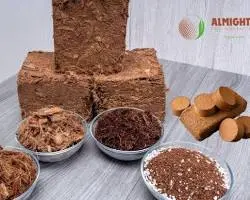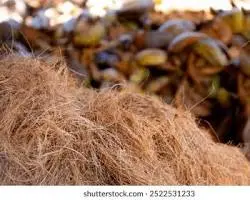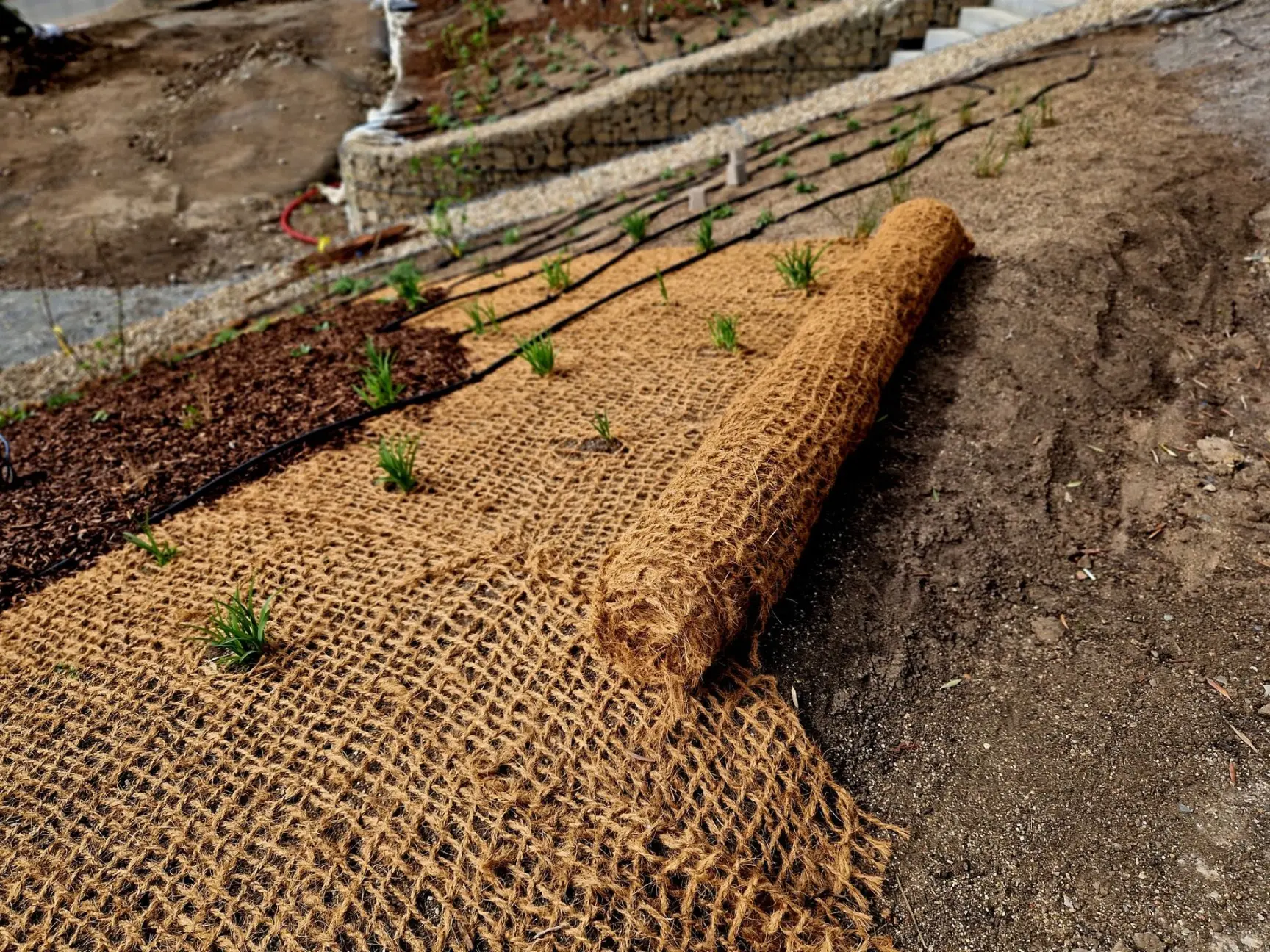India, the world’s largest coconut producer, faces a massive environmental challenge: managing the colossal mountains of coconut husk and shell waste generated every year. Historically, much of this material was discarded or used inefficiently.
Today, however, a global shift toward sustainability, organic farming, and eco-friendly industrial inputs has transformed this waste into "Indian Green Gold."
The export of coconut by-products—primarily coir, coco peat, and activated carbon—is a multi-crore industry, driven entirely by products once considered trash. For Indian exporters, this segment offers stable demand and a powerful, ethical narrative.
This detailed guide will cover the major exportable by-products, the crucial steps required to register your business with the Coir Board of India, and the top global markets hungry for your sustainable goods.

Part 1: The "Waste to Wealth" Products Driving Export Growth
The most successful coconut by-products for export come from the husk and shell, offering extraordinary versatility across horticulture and industry.
1. Coco Peat (Coir Pith) – The Star Product
Coco peat is the spongy, dust-like material left over after the coir fiber has been extracted from the husk. This product accounts for a majority of India’s coir export value.
Global Use: A lightweight, sustainable, and highly sought-after soilless growing medium. It is used extensively in hydroponics, commercial greenhouses, nurseries, and indoor gardening.
Key Advantage: It can absorb water up to ten times its weight while maintaining excellent aeration, promoting healthy root growth. It is usually exported in compressed bricks or blocks (low EC).
2. Coir Fiber Products
Coir is the coarse fiber extracted from the husk. India specializes in adding value to this fiber.
Global Use:
Erosion Control: Coir mesh/nets and geo-textiles are biodegradable and used to stabilize soil on slopes and riverbanks worldwide.
Horticulture: Coir pots, baskets, and hanging basket liners.
Industrial: Coir mattresses, floor mats, and brushes.
3. Coconut Shell Charcoal & Activated Carbon
The hard coconut shell, once burned in a controlled environment, yields shell charcoal, which is then processed into Activated Carbon.
Global Use: Activated Carbon made from coconut shell is considered superior due to its high surface area and fine pore structure.
Purification: Used for water filtration, air purification, and refining/bleaching vegetable oils and chemicals.
Industry: Used in the automotive and pharmaceutical sectors.
4. Coconut Shell Powder (CSP)
The pulverized powder of the coconut shell.
Global Use: Acts as a specialized filler and phenolic extruder in the manufacturing of:
Plywood and laminated boards.
Mosquito coils and incense sticks (agarbattis).

Part 2: The Sustainability Edge – Why the World Buys Indian Coir
The boom in coir exports is fundamentally driven by one factor: Sustainability.
In global horticulture, coir is the direct competitor and replacement for peat moss. Peat moss is harvested from fragile bog ecosystems, which are vital carbon sinks that take thousands of years to form. Mined peat moss is environmentally damaging and non-renewable.
The Eco-Friendly Alternative: Coconut coir is a 100% renewable resource, harvested annually from the abundantly grown coconut palm. By choosing coir, global buyers, particularly in Europe and North America, are able to meet their environmental goals and consumer demand for organic, sustainable products.
This powerful narrative—turning agricultural waste into a planet-friendly growing medium—is India’s biggest export advantage.

Part 3: The Export Roadmap – Registering with the Coir Board
To export coconut waste by-products, you must adhere to the specific regulatory framework established by the Government of India, with the Coir Board as your key authority.
1. Mandatory Licenses & Registration
IEC Code: The essential Importer-Exporter Code from the DGFT.
GST Registration: Necessary for all transactions and claiming zero-rated export tax benefits.
Udyam Registration: Recommended if you operate a manufacturing unit (MSME).
2. The Crucial Step: RCMC from the Coir Board of India
For coir, coco peat, and related products, you must register with the Coir Board of India (a statutory body under the Ministry of MSME) and obtain your Registration-Cum-Membership Certificate (RCMC).
❗ Important Note: Unlike many agricultural products governed by APEDA, coir products fall under the Coir Board. You must register with the Coir Board to access export schemes and be recognized as a legitimate exporter.
Key Documents for RCMC:
Application Form (Online via the Coir Board portal).
Copy of the IEC Code.
PAN Card Copy.
Bank Certificate showing your financial status (Current Account).
Proof of business constitution (MoA/AoA, Partnership Deed, etc.).
A valid export order (often required for new exporters).
3. Essential Shipping Documentation
Phytosanitary Certificate: This document is mandatory for coir and coco peat. Issued by the Plant Protection Organisation, it certifies that your product is free from harmful pests, diseases, and weed seeds, ensuring the ecological safety of the destination country.
Commercial Invoice, Packing List, and Bill of Lading (B/L).
Certificate of Origin.

Part 4: Key Global Buyers and Market Requirements
The market for coco peat and coir is segmented into high-volume, cost-competitive markets (Asia) and high-value, quality-driven markets (North America/EU).
1. United States of America (USA)
What they buy: Primarily compressed Coco Peat blocks and grow bags, and coir for landscaping/erosion control.
Market Demand: Driven by the rapid growth of urban farming, hydroponic systems, and hobby gardening. American consumers strongly prefer eco-friendly products over traditional peat moss.
Key Requirement: Consistent quality, uniform compression, and clear, attractive consumer packaging for B2C retail.
2. China
What they buy: High volume of Coco Peat.
Market Demand: Driven by massive investment in high-tech, large-scale vertical farms and commercial greenhouses. China's domestic supply cannot meet the demands of its rapidly expanding agricultural technology sector.
Key Requirement: Volume capacity and competitive pricing.
3. Netherlands & European Union (EU)
What they buy: High-grade Coco Peat (low EC/salt content) and coir geo-textiles.
Market Demand: The Netherlands is the central hub for horticultural exports in Europe. The market is defined by strict environmental regulations pushing farmers away from peat moss.
Key Requirement: Low Electrical Conductivity (EC). EU growers demand coir that has been meticulously washed and buffered to remove salts, as their sensitive, export-focused crops require precise nutrient delivery. This is the highest quality standard.
Part 5: Further Resources & Related Blogs
To help you on your export journey, leverage these resources:
BLOG: How to Export Lemons from India: Understand the logistics of fresh perishables versus dry coir products. [Link to Your Lemon Export Blog Here]
BLOG: The Great Indian Tea Paradox: Why We Import AND Export: Learn about another complex commodity-based export market. [Link to Your Tea Export Blog Here]
Conclusion: The Sustainable Future is Fibrous
The export of coconut waste by-products is a compelling success story of Indian manufacturing and agricultural ingenuity. By transforming a liability into a highly sought-after, sustainable global commodity, Indian exporters are not just shipping products—they are shipping a commitment to ecological responsibility. The market is huge, the trend is irreversible, and the opportunity for growth is wide open.
Master the Coir Board regulations, ensure pristine quality control (especially low EC for EU/USA markets), and you will be well-positioned to turn India's abundant coconut husk into guaranteed "Green Gold."